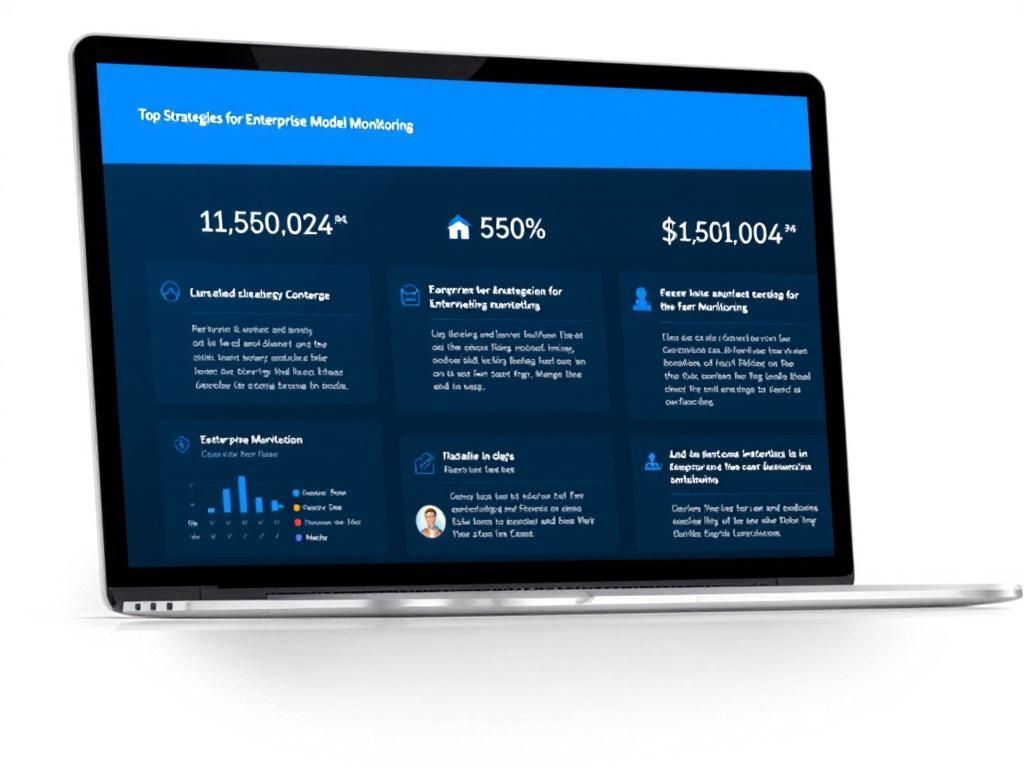In today’s data-driven world, organizations are increasingly relying on machine learning models to drive business decisions and enhance operational efficiency. However, the deployment of these models does not mark the end of their lifecycle. Instead, effective monitoring is crucial to ensure that models perform as expected over time. This article delves into the essential strategies for enterprise model monitoring, emphasizing the importance of proactive measures to maintain model integrity and performance.
Understanding the Importance of Model Monitoring
Model monitoring is the process of continuously assessing the performance and behavior of machine learning models in production. The significance of this process lies in several factors:
- Data Drift: Changes in input data characteristics can lead to decreased model performance.
- Concept Drift: The underlying relationship between input data and target variables may evolve, requiring model reassessment.
- Regulatory Compliance: Many industries require adherence to strict regulations regarding model performance and fairness.
- Business Impact: Poorly performing models can lead to erroneous business decisions and financial loss.
Key Metrics for Model Performance
To effectively monitor models, it’s essential to track key performance metrics that can provide insights into their effectiveness:
| Metric | Description |
|---|---|
| Accuracy | Measures how often the model makes correct predictions. |
| Precision | Indicates how many of the positively predicted instances were actually positive. |
| Recall | Represents the ability of the model to find all the relevant cases (true positives). |
| F1 Score | The harmonic mean of precision and recall, useful for imbalanced classes. |
| AUC-ROC | Area under the receiver operating characteristic curve, measuring the model’s capability to distinguish between classes. |
Strategies for Effective Model Monitoring
1. Establish a Baseline
Before deploying a model, it’s crucial to establish baseline performance metrics based on historical data. This baseline will serve as a reference point for ongoing monitoring activities.
2. Implement Real-Time Monitoring
Utilizing platforms that allow for real-time monitoring can provide immediate insights into model performance. Key aspects to consider include:
- Automated alerts for performance dips.
- Dashboard visualizations of key metrics.
- Integration with existing data pipelines for seamless updates.
3. Utilize Automated Drift Detection
Automated tools can help identify data and concept drift by monitoring changes in input data distributions and model performance metrics over time. Some popular methods include:
- Statistical tests (e.g., Kolmogorov-Smirnov test).
- Monitoring prediction distributions.
- Leveraging machine learning algorithms designed for drift detection.
4. Regular Model Retraining
To combat data and concept drift, organizations should schedule regular model retraining. Factors to consider when determining retraining frequency include:
- The rate of incoming new data.
- Historical performance over time.
- Changes in business goals and objectives.
5. Version Control for Models
Maintaining version control of machine learning models enables organizations to track changes and easily roll back to previous versions if necessary. This can be achieved through:
- Git for code and model versioning.
- Model registries to manage different versions of models.
6. Implement Feedback Loops
Creating a feedback loop between stakeholders and data scientists can enhance model performance. Feedback should be facilitated through:
- User feedback on model outputs.
- Regular meetings to discuss model effectiveness.
- Incorporating business insights into model updates.
7. Ensure Compliance and Governance
With the increasing scrutiny on AI and machine learning, ensuring compliance with industry regulations is paramount. Establishing governance policies can help in:
- Documenting model development processes.
- Regular audits of model performance and data usage.
- Implementing fairness checks to mitigate bias.
Case Studies: Successful Model Monitoring Implementations
Several organizations have successfully implemented robust model monitoring strategies. Here are a couple of examples:
Example 1: E-commerce Recommendation System
An e-commerce platform implemented real-time monitoring of their recommendation engine. By tracking user engagement and conversion rates, they quickly identified a drop in performance due to a change in user behavior. Leveraging automated drift detection tools, they were able to retrain the model and restore performance within days.
Example 2: Financial Fraud Detection
A financial institution employed a combination of statistical tests and user feedback loops to monitor their fraud detection model. Regular review meetings facilitated communication between analysts and data scientists, ultimately leading to a more robust model that adapted quickly to evolving fraud patterns.
Conclusion
Effective model monitoring is an ongoing process that requires careful planning, execution, and collaboration across teams. By implementing the strategies outlined in this article, organizations can ensure that their machine learning models remain effective, compliant, and aligned with business objectives. As the landscape of data and technology continues to evolve, staying ahead of potential challenges through proactive monitoring will be essential for sustained success.
FAQ
What is enterprise model monitoring?
Enterprise model monitoring involves tracking and evaluating the performance of business models and processes to ensure they are effective and aligned with organizational goals.
Why is enterprise model monitoring important?
It is crucial for identifying inefficiencies, mitigating risks, and ensuring that the business adapts to changing market conditions and customer needs.
What are the key strategies for effective enterprise model monitoring?
Key strategies include establishing clear KPIs, leveraging real-time data analytics, conducting regular performance reviews, and fostering a culture of continuous improvement.
How can technology enhance enterprise model monitoring?
Technology can enhance monitoring through automation, advanced analytics, and AI-driven insights, which provide real-time visibility into performance metrics.
What role does stakeholder engagement play in model monitoring?
Stakeholder engagement is essential for gathering diverse perspectives, ensuring accountability, and fostering collaboration in the monitoring process.
How often should enterprises review their models?
Enterprises should conduct model reviews regularly, at least quarterly, to adapt to changes and optimize performance.




